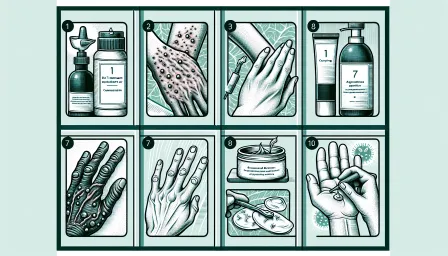What Step is Retinol in Your Skincare Routine? A Complete Guide

Learn what step retinol should be in your skincare routine with our comprehensive guide. Discover the benefits, application tips, and common mistakes.
Retinol is one of the most potent ingredients in skincare, renowned for its anti-aging and skin-renewing properties. However, incorporating retinol into your skincare routine can be confusing, especially if you're unsure about the correct order of application. This comprehensive guide will answer the question: what step is retinol in your skincare routine? It will provide you with clear instructions, tips, and insights to help you make the most of this powerful ingredient.
Understanding Retinol
Retinol is a derivative of Vitamin A that promotes cell turnover, boosting collagen production and resulting in smoother, more even skin. It's lauded for its effectiveness in combating signs of aging, such as fine lines, wrinkles, and hyperpigmentation. However, due to its potency, it needs to be used correctly to avoid potential irritation.
Preparation: Starting with the Basics
Cleanse Your Face
The first step in any skincare routine should be to cleanse your face thoroughly. Choose a gentle, sulfate-free cleanser that won't strip your skin of its natural oils. Cleansing removes dirt, oil, and makeup, creating a fresh canvas for the subsequent steps.
Tone
Using a toner helps to balance your skin’s pH levels and preps your skin to absorb the following products more effectively. Opt for an alcohol-free toner to avoid drying out your skin.
Incorporating Retinol: The Correct Order
Serum
After toning, some skincare enthusiasts prefer to apply their serum before retinol. This step isn't strictly necessary, but if you’re using a hydrating serum, it can help to mitigate some of the dryness that retinol may cause. Be cautious, though, as not all serums are compatible with retinol. Hyaluronic acid and other hydrating serums are usually safe options.
Apply Retinol
Once your skin is prepped, it's time to apply retinol. Start with a pea-sized amount and gently spread it over your face. It's advisable to begin with a lower concentration of retinol if you're a beginner, gradually increasing the strength as your skin builds tolerance.
Post-Application Care: Maximizing Benefits and Minimizing Risks
Moisturize
After applying retinol, it's crucial to seal it with a good moisturizer. This step helps to lock in hydration, enabling your skin to recuperate and absorb the retinol more effectively. Look for moisturizers that contain ceramides, peptides, and hyaluronic acid.
Sunscreen
Retinol can make your skin more sensitive to the sun. Therefore, applying sunscreen is non-negotiable. Use a broad-spectrum sunscreen with SPF 30 or higher every morning to protect your skin from UV damage.
Common Mistakes and How to Avoid Them
Using Too Much Too Soon
Retinol is effective, but too much too soon can lead to irritation. Start with a lower concentration and gradually increase it as your skin becomes more tolerant.
Not Using Sunscreen
As mentioned earlier, retinol increases sun sensitivity. Skipping sunscreen can lead to skin damage and negate the benefits of retinol.
Combining Incompatible Ingredients
Certain ingredients like benzoyl peroxide and alpha-hydroxy acids (AHAs) can be too harsh when used with retinol. Consult with a dermatologist to customize a routine that suits your skin type.
Final Thoughts
Incorporating retinol into your skincare routine can yield incredible results if done correctly. By understanding what step is retinol in your regime, you can maximize its benefits while minimizing potential risks. Cleanse, tone, apply retinol, and follow up with a moisturizer and sunscreen to create a balanced and effective skincare routine. Always listen to your skin and adjust your routine as needed.
For personalized advice, consider consulting a dermatologist to tailor a routine that perfectly fits your skin type and addresses your specific concerns.



























